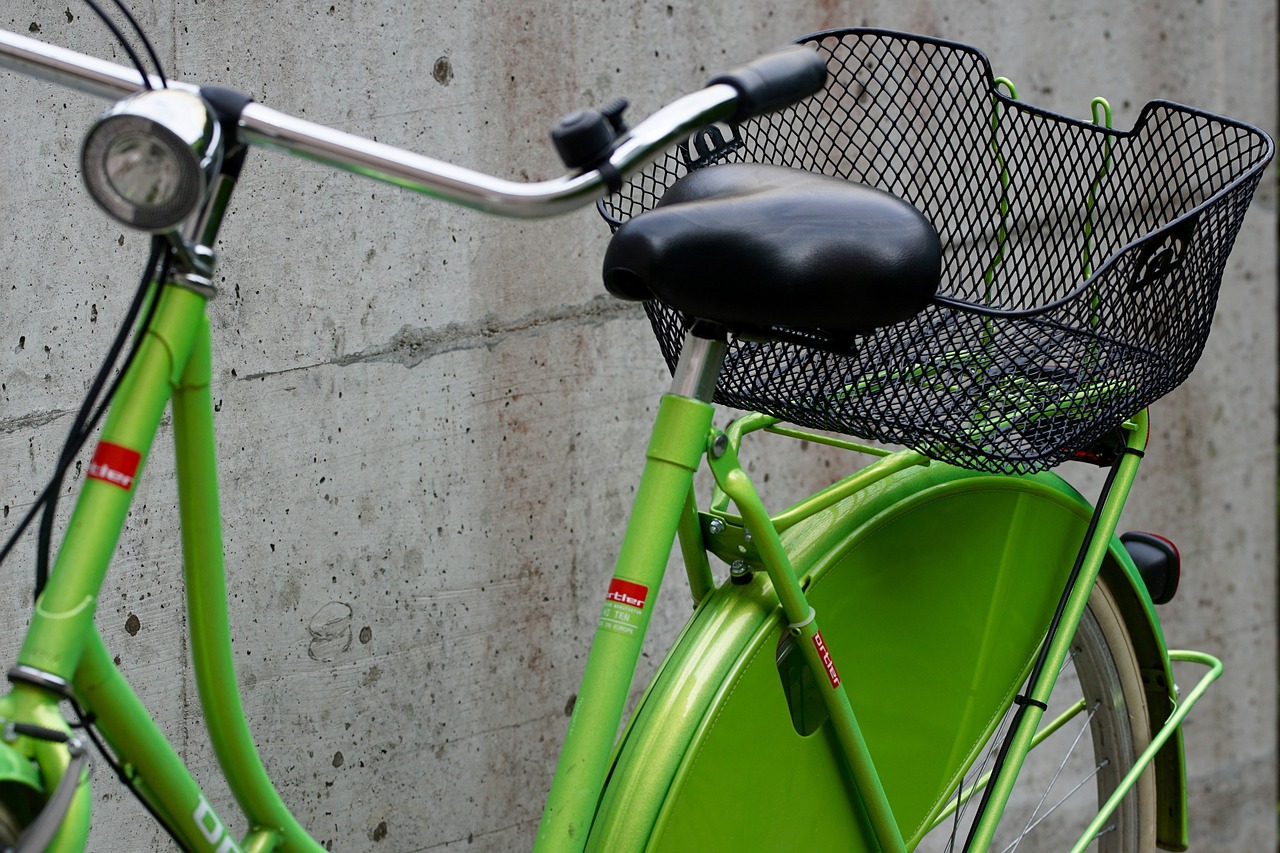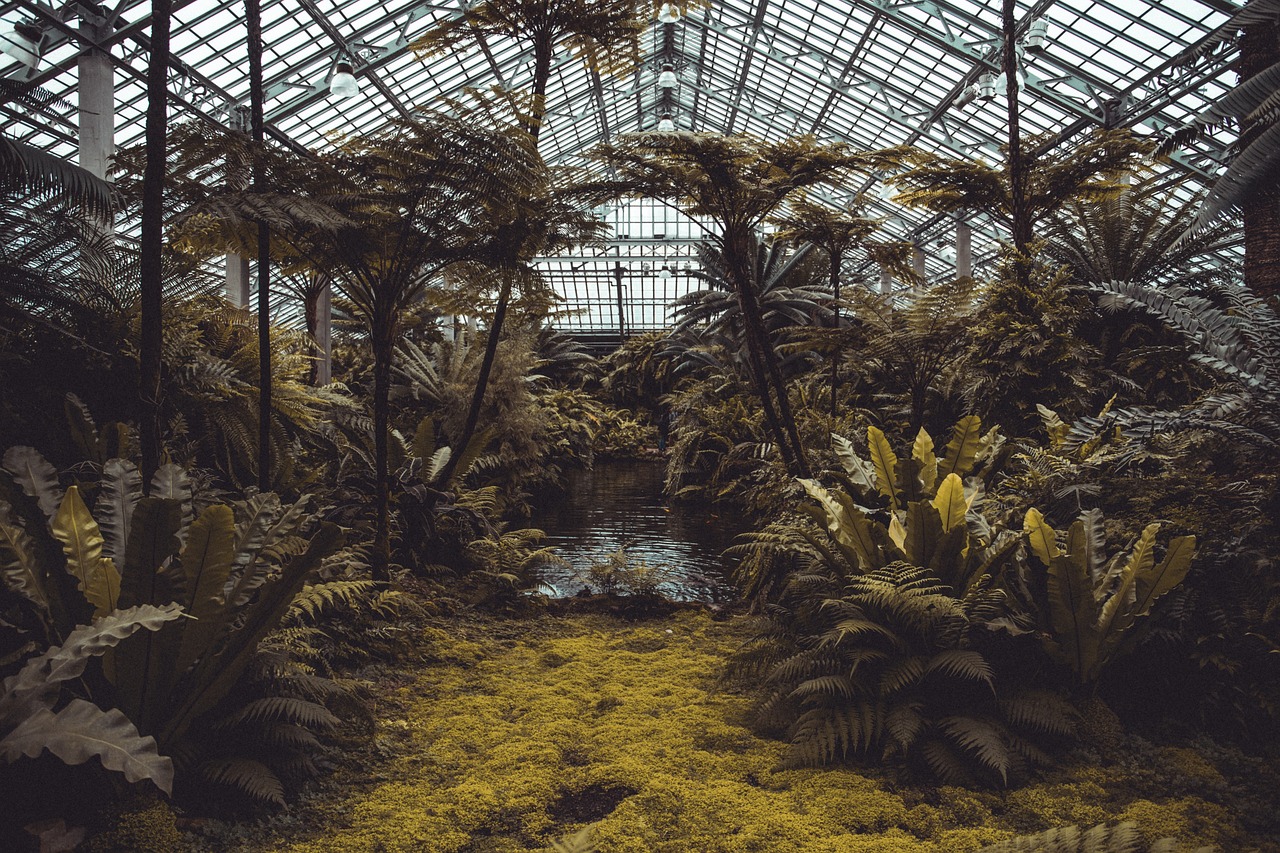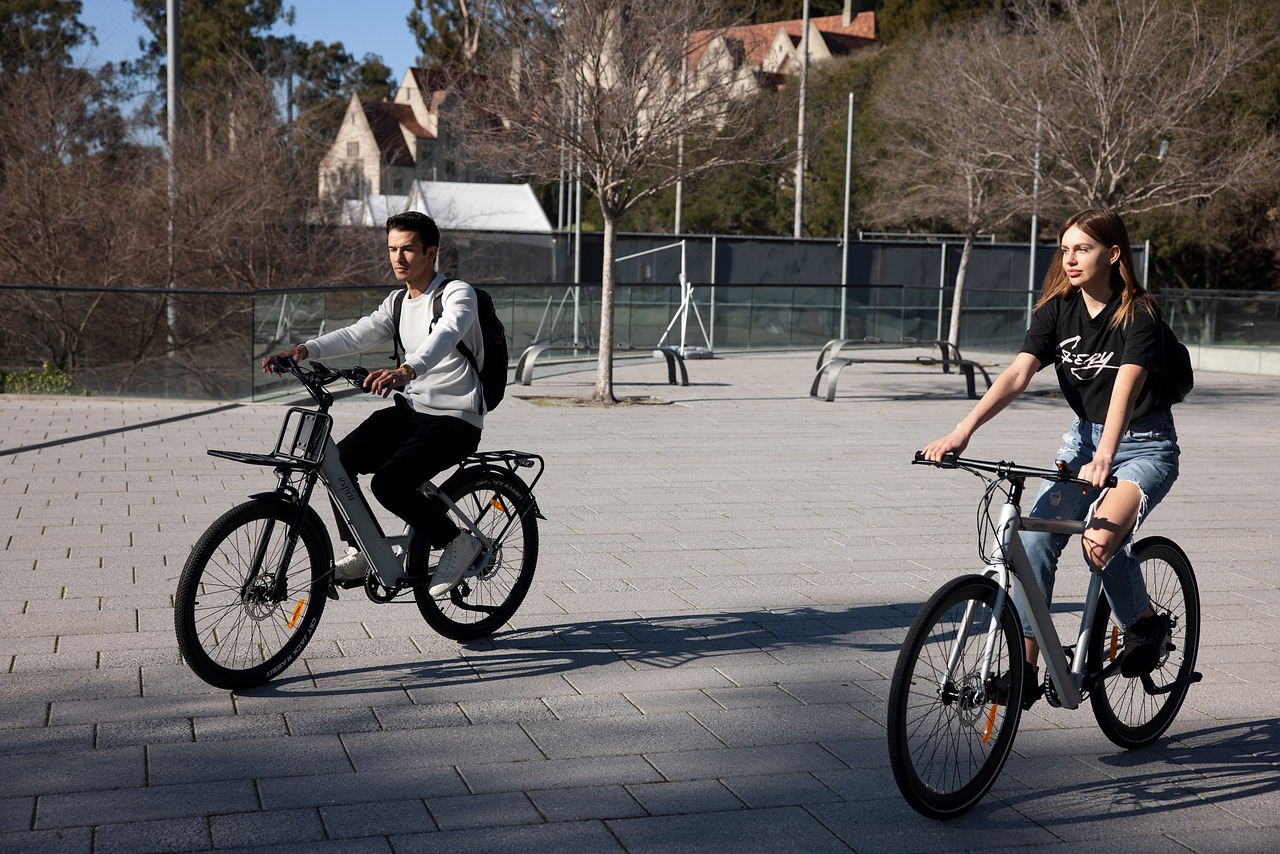How to Build an Eco-Friendly Wardrobe from Scratch
In today's world, where fast fashion dominates the market, the idea of building an eco-friendly wardrobe might seem daunting at first. However, it’s not only possible but also incredibly rewarding! By making conscious choices, you can create a wardrobe that reflects your personal style while being kind to our planet. Imagine stepping into your closet and knowing that every piece you own is not just a fashion statement but a commitment to sustainability. How empowering is that?
The journey to an eco-friendly wardrobe starts with understanding the impact of your clothing choices. Did you know that the fashion industry is one of the largest polluters in the world? From water consumption to harmful chemicals, the effects are staggering. But fear not! By embracing sustainable practices and opting for ethical brands, you can contribute to a positive change. It’s about being mindful, not just about what you wear, but also about how it’s made.
So, how do you begin? First, you need to educate yourself about sustainable fashion. This involves recognizing the significance of eco-friendly materials, supporting ethical brands, and adopting practices that minimize waste. You might be surprised to learn that even small changes can lead to significant impacts. For instance, opting for organic cotton over conventional cotton can save thousands of gallons of water and reduce pesticide use. Isn't it amazing how your choices can ripple through the industry?
Next, let’s talk about materials. When building your wardrobe, consider fabrics that are not only sustainable but also durable. Some fantastic options include:
- Organic Cotton: Grown without harmful pesticides and fertilizers.
- Hemp: A super sustainable crop that requires minimal water.
- Tencel: Made from sustainably sourced wood pulp, it’s biodegradable and soft.
- Recycled Materials: Fabrics made from post-consumer waste, reducing landfill impact.
Choosing the right materials is just one piece of the puzzle. You also want to ensure that the brands you support align with your values. Researching ethical brands can be a fun adventure! Look for companies that prioritize fair labor practices, transparency in their supply chain, and sustainable production methods. Websites and apps dedicated to ethical fashion can be a great resource. Remember, when you buy from ethical brands, you’re not just purchasing clothing; you’re investing in a better future.
Now, let’s dive into the idea of a capsule wardrobe. This concept is all about minimizing clutter while maximizing style. Imagine having a curated collection of versatile pieces that you love and can mix and match for any occasion. A capsule wardrobe typically consists of about 30-40 items, including tops, bottoms, dresses, and outerwear. The beauty of it is that it simplifies your life and reduces the temptation to buy unnecessary items. Plus, it’s a fantastic way to showcase your personal style without overwhelming your closet!
Another exciting avenue to explore is thrifting and second-hand shopping. Not only does this practice help reduce waste, but it can also lead to some unique fashion finds! Think of it as a treasure hunt—each visit to a thrift store or vintage shop can yield hidden gems that tell a story. You’ll not only save money but also contribute to a more sustainable fashion cycle. Who doesn’t love the thrill of finding a one-of-a-kind piece that no one else will have?
For those with a creative flair, DIY and upcycling techniques can breathe new life into old garments. Why toss out a shirt with a small tear when you can turn it into a trendy tote bag? With a little imagination, you can transform your wardrobe and reduce textile waste. There are countless tutorials online to guide you through the process, making it accessible and fun.
Maintaining your eco-friendly wardrobe is just as important as building it. Proper care can extend the life of your clothing significantly. Simple practices like washing in cold water, air drying, and repairing instead of discarding can make a world of difference. Remember, every time you take care of your clothes, you’re also taking care of the planet!
Lastly, education is key. The more you learn about sustainable fashion, the better choices you can make. Share your knowledge with friends and family, and inspire them to join the movement. Together, we can create a community that values sustainability and ethical practices in fashion.
As you embark on this journey to build your eco-friendly wardrobe, remember that it’s not about perfection. It’s about progress. Every small step counts, and your choices can inspire others. So, let’s get started on this exciting adventure toward a more sustainable future!
- What is sustainable fashion? Sustainable fashion refers to clothing that is designed, manufactured, and marketed in a way that is environmentally friendly and ethically produced.
- How can I start building an eco-friendly wardrobe? Begin by researching sustainable materials, supporting ethical brands, and considering second-hand shopping.
- What are some eco-friendly materials to look for? Look for organic cotton, hemp, Tencel, and recycled materials.
- How do I maintain my eco-friendly wardrobe? Wash clothes in cold water, air dry when possible, and repair items instead of discarding them.
- Can I still be stylish while being eco-friendly? Absolutely! A well-curated capsule wardrobe can be both stylish and sustainable.

Understanding Sustainable Fashion
Sustainable fashion is more than just a trend; it's a movement that seeks to revolutionize the way we think about clothing and its impact on our planet. Imagine a world where our clothes are not just a reflection of our style but also a testament to our commitment to the environment. This is what sustainable fashion strives to achieve. At its core, it focuses on environmentally friendly practices and ethical production methods, aiming to reduce the negative impact the fashion industry has on our planet.
But why is this so crucial? Well, the fashion industry is one of the largest polluters in the world. From the water-intensive processes used to grow cotton to the toxic dyes that end up in our waterways, the environmental footprint of traditional fashion is staggering. To put it into perspective, the production of just one pair of jeans can consume over 7,500 liters of water! That's enough to supply one person with drinking water for over seven years. By embracing sustainable fashion, we can help mitigate these issues and foster a healthier planet.
Moreover, sustainable fashion also emphasizes ethical labor practices. This means ensuring that the people who create our clothes are treated fairly and work in safe conditions. Unfortunately, many fast fashion brands exploit cheap labor in developing countries, leading to poor working conditions and unfair wages. By choosing sustainable options, we support brands that prioritize fair trade and worker rights, contributing to a more equitable global economy.
In essence, sustainable fashion is about making informed choices. It's about understanding the lifecycle of our clothing—from production to disposal—and recognizing the power we hold as consumers. Each time we shop, we cast a vote for the kind of world we want to live in. So, the next time you're about to buy that trendy shirt, ask yourself: Is this purchase contributing to a sustainable future?
To further illustrate the impact of sustainable fashion, consider the following table that compares traditional fashion practices with sustainable alternatives:
| Aspect | Traditional Fashion | Sustainable Fashion |
|---|---|---|
| Environmental Impact | High pollution and waste | Minimized waste and eco-friendly materials |
| Labor Practices | Often exploitative | Fair wages and safe working conditions |
| Consumer Mindset | Fast consumption | Mindful consumption |
Understanding sustainable fashion is the first step towards making a positive change in your wardrobe and the world. By becoming aware of the implications of our fashion choices, we can all contribute to a more sustainable future. So, let’s embrace this journey together, one eco-friendly outfit at a time!
- What is sustainable fashion? Sustainable fashion refers to clothing that is produced in a way that is environmentally and socially responsible, focusing on reducing waste and ensuring fair labor practices.
- Why is sustainable fashion important? It helps reduce the fashion industry's negative impact on the environment and promotes ethical treatment of workers.
- How can I start building a sustainable wardrobe? Begin by choosing eco-friendly materials, supporting ethical brands, and considering second-hand shopping.

Choosing Eco-Friendly Materials
When it comes to building an eco-friendly wardrobe, one of the most significant steps is choosing the right materials. The fabric you wear not only affects your comfort but also has a profound impact on the environment. Traditional materials like cotton and polyester often come with a hefty environmental price tag, from pesticide use to water consumption and pollution. By opting for sustainable fabrics, you can make a conscious choice that benefits both you and the planet.
So, what exactly are eco-friendly materials? These are fabrics that are produced with minimal environmental impact, using sustainable practices that prioritize the health of our planet. Let’s explore some of the most popular eco-friendly materials that can easily be incorporated into your wardrobe:
- Organic Cotton: Unlike conventional cotton, organic cotton is grown without harmful pesticides or fertilizers. It uses less water and promotes healthier soil, making it a fantastic choice for eco-conscious consumers.
- Tencel (Lyocell): This fabric is made from sustainably sourced wood pulp, primarily from eucalyptus trees. The production process is closed-loop, meaning that solvents used in manufacturing are recycled, reducing waste.
- Hemp: Hemp is a super resilient plant that requires little water and no pesticides. It grows quickly and enriches the soil, making it a sustainable option for clothing.
- Bamboo: Bamboo fabric is soft and breathable, and it grows rapidly without the need for fertilizers or pesticides. However, it's important to ensure that the bamboo is processed sustainably.
- Recycled Fabrics: Fabrics made from recycled materials, such as recycled polyester, help reduce waste and energy consumption. By repurposing materials that would otherwise end up in landfills, you’re making a positive impact.
Choosing these materials not only helps reduce your carbon footprint but also promotes a healthier lifestyle. Imagine slipping into a soft organic cotton t-shirt or a cozy hemp sweater, knowing that your choice supports sustainable practices. Isn’t that a wonderful feeling?
Additionally, when shopping for eco-friendly materials, it's essential to check for certifications that ensure the fabric meets sustainability standards. Look for labels like Global Organic Textile Standard (GOTS), OEKO-TEX, or Forest Stewardship Council (FSC). These certifications provide assurance that the materials are produced responsibly and ethically.
It's also worth noting that while the fabric is crucial, the entire lifecycle of the garment matters. Consider how the clothing is manufactured, transported, and eventually disposed of. By making informed choices, you can support a more sustainable fashion industry and contribute to the well-being of our planet.
In conclusion, choosing eco-friendly materials is a powerful step towards creating a sustainable wardrobe. With so many fantastic options available, you can feel good about your fashion choices while making a positive impact on the environment. Remember, every small change counts, and together, we can pave the way for a greener future.
Q: What are the environmental benefits of using eco-friendly materials?
A: Eco-friendly materials typically require fewer resources to produce, reduce pollution, and promote sustainable practices that benefit the environment.
Q: How can I identify sustainable fabrics when shopping?
A: Look for certifications such as GOTS, OEKO-TEX, and FSC, which indicate that the materials are produced sustainably and ethically.
Q: Are eco-friendly materials more expensive?
A: While some sustainable fabrics may have a higher upfront cost, they often last longer and are better for the environment, making them a worthwhile investment in the long run.

Researching Ethical Brands
When it comes to building an eco-friendly wardrobe, the brands you choose to support make all the difference. is not just about finding stylish clothes; it's about aligning your purchases with your values. In a world where fast fashion reigns supreme, it’s crucial to seek out companies that prioritize sustainability and ethical practices. But how do you navigate through the sea of brands to find those that truly make a positive impact?
First off, start by digging into a brand's transparency. Many ethical brands are proud of their practices and will openly share information about their supply chains, labor conditions, and environmental impact. Look for brands that provide detailed information about where and how their products are made. This transparency is a good indicator that they take their commitments seriously. If a brand is vague about its manufacturing processes, it might be a red flag.
Another important aspect to consider is the materials used in their products. Sustainable fabrics like organic cotton, Tencel, and recycled polyester are often favored by ethical brands. These materials not only minimize environmental impact but also contribute to better working conditions for those involved in the production process. You can look for certifications such as GOTS (Global Organic Textile Standard) or Fair Trade, which can guide you in identifying brands that adhere to strict ethical standards.
To help you get started, here’s a quick table that outlines some well-known ethical brands and their commitments:
| Brand | Commitment | Materials Used |
|---|---|---|
| Patagonia | Environmental activism and fair labor | Recycled polyester, organic cotton |
| Eileen Fisher | Renewable resources and fair wages | Organic linen, Tencel |
| Everlane | Radical transparency | Recycled materials, organic cotton |
Moreover, don’t underestimate the power of customer reviews and social media. Platforms like Instagram and Pinterest are treasure troves of information where you can find real-life experiences shared by other consumers. Look for testimonials that speak to both the quality of the products and the brand's ethical practices. Engaging with these communities can also spark conversations that lead to new discoveries about brands you may not have considered before.
Lastly, consider the longevity of the products. Ethical fashion is not just about the initial purchase; it’s about investing in pieces that will last. Brands that focus on quality over quantity often create timeless designs that won’t go out of style quickly. By choosing durable items, you reduce the need for frequent replacements, which ultimately lessens your overall consumption and waste.
In conclusion, researching ethical brands may seem like a daunting task, but it’s incredibly rewarding. By supporting companies that prioritize sustainability and ethical practices, you’re not just enhancing your wardrobe but also contributing to a larger movement towards a more sustainable fashion industry. So, the next time you shop, remember: your choices matter. Choose wisely, and let your wardrobe reflect your values!
- What are some signs of an ethical brand? Look for transparency in their supply chain, certifications, and use of sustainable materials.
- Are ethical brands more expensive? While some may have a higher price point, they often provide better quality and longevity, making them a worthwhile investment.
- How can I find ethical brands? Use online resources, social media, and community recommendations to discover brands that align with your values.

Building a Capsule Wardrobe
Building a capsule wardrobe is like creating a personal style sanctuary, where each piece plays a vital role in your fashion story. Imagine opening your closet and seeing a collection of clothes that not only look fabulous but also work harmoniously together. A capsule wardrobe typically consists of a limited number of versatile pieces that can be mixed and matched to create a variety of outfits. This approach not only simplifies your daily decisions but also promotes sustainable fashion by reducing the amount of clothing you need.
So, how do you start building this magical capsule wardrobe? First, consider your lifestyle. Are you often in a corporate setting, or do you spend your days in casual environments? Understanding your daily activities will help you select pieces that are functional yet stylish. Aim for a balance between essentials and statement items. Essentials might include a classic pair of jeans, a tailored blazer, and a simple white tee, while statement pieces could be a vibrant dress or an eye-catching scarf.
Next, think about color palettes. Sticking to a cohesive color scheme can make a world of difference. Neutral tones like black, white, gray, and beige can serve as your base, while a few pops of color can add personality. This way, you can easily mix and match without feeling like you’re wearing the same outfit every day. For instance, a pair of black trousers can look chic with a white blouse, and with the addition of a colorful cardigan, you’re ready for a night out!
It's also essential to consider the quality of the items you choose. Investing in high-quality, sustainable fabrics may cost more upfront, but they will last longer and reduce the need for frequent replacements. Look for materials like organic cotton, Tencel, or linen, as these are not only eco-friendly but also comfortable and stylish. Remember, a capsule wardrobe is about quality over quantity.
As you curate your collection, you might want to keep a checklist of the essential items to include in your capsule wardrobe. Here’s a simple table to guide you:
| Type of Clothing | Examples |
|---|---|
| Tops | Basic tees, blouses, sweaters |
| Bottoms | Jeans, trousers, skirts |
| Outerwear | Blazers, jackets, coats |
| Footwear | Flats, sneakers, boots |
| Accessories | Scarves, belts, bags |
Finally, don’t forget to revisit your capsule wardrobe regularly. As seasons change, so do your needs and preferences. It’s perfectly okay to swap out a few pieces or add new ones as you discover what works best for you. The goal is to create a wardrobe that not only reflects your style but also aligns with your values of sustainability and ethical fashion.
Q: How many pieces should be in a capsule wardrobe?
A: Typically, a capsule wardrobe consists of 20-40 pieces, but this can vary based on personal preference and lifestyle.
Q: Can I include seasonal items in my capsule wardrobe?
A: Absolutely! You can rotate seasonal items in and out of your capsule wardrobe to keep it fresh and functional.
Q: What if I have a specific style that doesn’t fit into a capsule wardrobe?
A: The beauty of a capsule wardrobe is its flexibility. You can adapt the concept to fit your unique style while still keeping it sustainable.

Thrifting and Second-Hand Shopping
Thrifting and second-hand shopping are not just trendy; they represent a revolutionary approach to fashion that aligns perfectly with sustainable living. Picture this: every time you step into a thrift store, you're not just hunting for a unique piece to add to your wardrobe; you're also participating in a movement that reduces waste and promotes a circular economy. Instead of contributing to the fast fashion cycle, you're giving pre-loved items a new lease on life. It’s like rescuing a puppy from a shelter—you're making a difference, one outfit at a time!
One of the most significant benefits of thrifting is the environmental impact. Did you know that the fashion industry is responsible for a staggering amount of waste? By choosing second-hand clothing, you’re actively helping to divert textiles from landfills, which is crucial for reducing pollution and conserving resources. Think about it: every item you buy second-hand is one less new item produced, which means less water consumption, fewer chemicals, and less energy used in production.
Moreover, thrifting can be a treasure hunt! You never know what you might find—unique vintage pieces, high-quality items that have stood the test of time, or designer labels at a fraction of the original price. However, it’s essential to approach thrifting with an open mind and a bit of strategy. Here are a few tips to help you navigate the aisles:
- Know Your Measurements: Sizes can vary significantly across brands and eras, so having your measurements handy can save you from disappointment.
- Check Quality: Look for items that are well-made. Check seams, zippers, and fabric integrity to ensure you’re getting a piece that will last.
- Be Patient: Sometimes, finding the perfect item takes time. Don’t rush the process; enjoy the hunt!
In addition to traditional thrift stores, consider exploring online platforms dedicated to second-hand shopping. Websites and apps like Poshmark, Depop, and ThredUp have made it easier than ever to find unique pieces from the comfort of your home. You can filter your search by size, style, and even brand, making it a breeze to find exactly what you’re looking for.
But what if you’re not a fan of shopping? No worries! You can also host clothing swaps with friends or community members. This fun, social event allows everyone to refresh their wardrobes without spending a dime. Just gather your friends, bring your gently used clothing, and trade! It’s a win-win situation where everyone walks away with something new.
In conclusion, thrifting and second-hand shopping are fantastic ways to build an eco-friendly wardrobe while also expressing your unique style. Remember, every piece you choose has a story, and by giving it a new home, you’re contributing to a more sustainable future. So, the next time you're tempted to buy something new, ask yourself—could I find something similar at a thrift store? Your wallet and the planet will thank you!
Q: Is thrifting really cheaper than buying new clothes?
A: Absolutely! Thrift stores often offer significantly lower prices than retail stores, allowing you to save money while shopping sustainably.
Q: How do I know if second-hand clothes are clean?
A: Most thrift stores and online platforms ensure that items are clean before selling them. However, it's always a good idea to wash any second-hand clothing before wearing it.
Q: Can I find high-quality brands while thrifting?
A: Yes! Many thrift stores receive donations from individuals who may have high-quality or designer items. With a bit of luck and patience, you can score some great finds!

DIY and Upcycling Techniques
In a world where fast fashion dominates, the idea of DIY and upcycling offers a refreshing alternative that not only promotes sustainability but also allows you to express your creativity. Imagine turning an old pair of jeans into a trendy bag or transforming a worn-out t-shirt into a stylish crop top. The possibilities are endless! By engaging in DIY projects, you not only breathe new life into your wardrobe but also contribute to reducing textile waste. It's like giving your clothes a second chance at life, and who doesn’t love a good makeover?
First off, let’s talk about the benefits of upcycling. Not only does it help the environment by minimizing the demand for new resources, but it also saves you money. Plus, there’s something incredibly satisfying about creating something unique that no one else has. If you’re wondering where to start, consider these simple techniques:
- Patchwork & Patching: Use fabric scraps to create beautiful patchwork designs on old clothing. This can add a unique flair to your garments.
- Fabric Dyeing: Experiment with natural dyes to revamp the color of faded clothes. Think of it as giving your wardrobe a fresh paint job!
- Reconstruction: Take apart old pieces and sew them back together in a new way. This could mean turning a long dress into a chic skirt and top combo.
Let’s dive deeper into some exciting DIY projects. For instance, if you have a few oversized shirts that you no longer wear, why not turn them into a stylish tote bag? Simply cut off the sleeves and the collar, sew the bottom shut, and voila! You have a unique bag that’s perfect for groceries or a day out. Not only is it functional, but it also tells a story – a conversation starter, if you will.
Another fun project is creating your own accessories. Take those leftover buttons, beads, or even fabric scraps and turn them into earrings or necklaces. It’s a fantastic way to add a personal touch to your outfits without spending a dime. Plus, you’ll be the only one rocking that accessory, making it even more special!
When it comes to upcycling, don’t forget about the power of online resources. Websites and platforms like Pinterest and YouTube are treasure troves of inspiration. You can find step-by-step guides and tutorials that take you through various projects, making it easy for even the most novice DIYers to get started. Just think about how much fun it would be to host a DIY night with friends, swapping ideas and techniques while sipping on some homemade lemonade!
Incorporating DIY and upcycling techniques into your wardrobe not only enhances your style but also reinforces your commitment to sustainability. Every time you choose to upcycle, you’re making a statement against the throwaway culture that pervades modern fashion. So, roll up your sleeves, grab those scissors, and let your creativity flow. You might just discover a hidden talent for fashion design!
Q: What materials do I need to start upcycling?
A: You’ll primarily need some basic sewing supplies like scissors, needles, and thread. Other materials can include fabric scraps, old clothing, and embellishments like buttons or beads.
Q: Is upcycling expensive?
A: Not at all! Upcycling can be very cost-effective since you’re using items you already own. The only investment might be in some basic sewing supplies if you don’t have them already.
Q: Can anyone learn to upcycle?
A: Absolutely! Upcycling is for everyone, regardless of skill level. There are plenty of beginner-friendly projects available online that can help you get started.

Maintaining Your Eco-Friendly Wardrobe
When you've put in the effort to build an eco-friendly wardrobe, the last thing you want is for your sustainable pieces to wear out prematurely. Maintaining your clothing is not just about keeping them looking good; it's about extending their life and minimizing waste. Think of your wardrobe as a garden: with the right care, it can flourish and provide you with beauty and utility for years to come. So, how do you ensure that your eco-friendly garments stay in top shape? Let’s dive into some essential tips!
First off, consider how you wash your clothes. Traditional laundry detergents can be harsh on both your garments and the environment. Opt for biodegradable detergents that are free from synthetic fragrances and dyes. Not only are they gentler on your clothes, but they also reduce the number of harmful chemicals released into our waterways. Plus, washing your clothes in cold water can save energy and help maintain the integrity of the fabric. Just imagine your favorite shirt lasting longer because you treated it with care!
Another crucial aspect of maintenance is storage. How you store your clothes can significantly impact their lifespan. Avoid overcrowding your closet, as this can lead to wrinkles and fabric damage. Instead, consider using breathable garment bags for delicate items and wooden hangers for jackets and coats to help maintain their shape. For knitwear, fold them neatly to prevent stretching. Think of your wardrobe as a cozy home for your clothes—give them the space they need to breathe!
Repairing your garments is another way to extend their life. Instead of tossing out a shirt with a small tear or a pair of jeans with a loose button, try your hand at some simple repairs. Not only will this save you money, but it also reduces waste. If you're not confident in your sewing skills, there are plenty of online tutorials that can guide you through the process. And if you’re feeling adventurous, you could even turn a damaged piece into something entirely new! Just like a phoenix rising from the ashes, your old clothes can be transformed into something beautiful.
Finally, don't forget about the importance of regularly decluttering your wardrobe. While it might seem counterintuitive, keeping your wardrobe organized and free of items you no longer wear can help you appreciate the pieces you truly love. Consider hosting a clothing swap with friends or donating items that are still in good condition. This way, you promote sustainable fashion practices and give your clothes a second life with someone who will cherish them. It’s a win-win situation!
In summary, maintaining your eco-friendly wardrobe is about being mindful of how you care for your clothes. From washing and storing to repairing and decluttering, each step contributes to a more sustainable lifestyle. Remember, every little effort counts, and together, we can make a significant impact on our planet. So, roll up your sleeves, and let’s keep that eco-friendly wardrobe thriving!
- How can I wash my eco-friendly clothes without damaging them? Use cold water and biodegradable detergents to protect both your garments and the environment.
- What are some easy repairs I can do at home? Simple repairs like sewing buttons, fixing hems, or patching small tears can be done with basic sewing skills.
- How often should I declutter my wardrobe? Aim to declutter at least twice a year to keep your wardrobe organized and maintain a sustainable approach.

Educating Yourself and Others
In the world of sustainable fashion, knowledge is power. It’s not just about making conscious choices for your own wardrobe; it’s about spreading that awareness to others. By educating yourself on eco-friendly practices, you become an advocate for change, inspiring those around you to think more critically about their fashion choices. So, how do you embark on this journey of learning and sharing? Let’s break it down.
Start by diving deep into the realms of sustainable fashion. Read books, follow blogs, and watch documentaries that highlight the impact of the fashion industry on our planet. Understanding the environmental and social issues at play is crucial. For instance, did you know that the fashion industry is one of the largest polluters in the world? It’s staggering! By grasping these facts, you can better articulate the importance of eco-friendly practices to others.
Once you’ve armed yourself with knowledge, it’s time to share. Host a small gathering with friends or family where you can discuss what you’ve learned. You could even organize a workshop to teach others about sustainable fashion choices, such as how to upcycle old clothing or identify ethical brands. Engaging in conversations about these topics can plant the seeds of change in others' minds.
Another effective method is to leverage social media. Platforms like Instagram and TikTok are powerful tools for spreading awareness. Share your journey towards building an eco-friendly wardrobe, post tips, and even showcase your favorite sustainable brands. Remember, visuals can be incredibly persuasive! Use hashtags like #SustainableFashion or #EcoFriendlyWardrobe to reach a broader audience.
Moreover, consider collaborating with local organizations focused on sustainability. They often have resources and events that can help you learn more while also providing opportunities to educate others. Running community events, such as clothing swaps or talks on sustainable practices, can foster a sense of community around eco-conscious living.
Lastly, don’t underestimate the power of conversations. Every time you wear a piece from an ethical brand or flaunt a thrifted outfit, it’s a chance to spark dialogue. When someone compliments your style, take the opportunity to share the story behind your choices. This personal touch can make the message resonate more deeply.
In conclusion, educating yourself and others about sustainable fashion is not just beneficial; it’s essential. By becoming a knowledgeable advocate, you can inspire change, promote eco-friendly practices, and contribute to a more sustainable future. Remember, every small step counts, and together, we can make a significant impact!
| Question | Answer |
|---|---|
| What is sustainable fashion? | Sustainable fashion refers to clothing that is designed, manufactured, distributed, and used in ways that are environmentally friendly and socially responsible. |
| How can I start building an eco-friendly wardrobe? | Begin by researching sustainable materials, supporting ethical brands, and considering second-hand shopping options. |
| Why is educating others about sustainable fashion important? | Education fosters awareness and encourages more people to make conscious choices, leading to a broader impact on the fashion industry and the environment. |

Staying Informed on Fashion Trends
In the fast-paced world of fashion, staying informed about the latest trends can feel like trying to catch smoke with your bare hands. But don’t worry! It’s totally possible to keep your finger on the pulse of what’s happening in the fashion scene without compromising your commitment to sustainability. So, how do you navigate this ever-changing landscape while maintaining your eco-friendly values? Let’s break it down.
First off, follow the right sources. Social media platforms like Instagram and Pinterest are treasure troves of inspiration, but they can also be overwhelming. To make the most of these platforms, curate your feed by following eco-conscious influencers and brands. Look for those who prioritize sustainability in their posts. This way, you can effortlessly blend style with ethics. You might find that a simple scroll can lead you to innovative ways to wear what you already own or how to style sustainable pieces.
Moreover, subscribing to newsletters from sustainable fashion blogs and websites can keep you in the loop about upcoming trends, eco-friendly practices, and brand launches. It’s like having a personal stylist who whispers the latest tips into your inbox! Websites like EcoWatch and The Good Trade offer valuable insights into sustainable fashion trends and ethical brands worth checking out. You can also explore platforms like Vogue for broader fashion trends while filtering out what aligns with your values.
Another effective way to stay informed is by attending local fashion events or workshops focused on sustainability. These gatherings not only provide firsthand knowledge but also connect you with like-minded individuals who share your passion for eco-friendly fashion. Imagine swapping stories with fellow eco-warriors while discovering new sustainable designers! It’s a win-win situation.
Furthermore, consider joining online forums or communities dedicated to sustainable fashion. Websites like Reddit’s Sustainable Fashion community allow you to engage in discussions, ask questions, and share your own tips. This collaborative approach not only educates you but also empowers others in their sustainable journey.
Lastly, don’t forget to reflect on your personal style as trends come and go. Ask yourself, “Does this trend resonate with me?” If it doesn’t, it might just be a fleeting moment in the fashion cycle. Instead of succumbing to every trend, focus on building a wardrobe that reflects your unique style and values. Remember, sustainability is not just about the clothes you wear; it’s about the choices you make.
- How can I stay updated on sustainable fashion trends? Following eco-conscious influencers, subscribing to sustainable fashion newsletters, and joining online communities are great ways to stay informed.
- Are there specific websites for sustainable fashion news? Yes! Websites like EcoWatch and The Good Trade offer valuable insights on sustainable fashion trends and ethical brands.
- How can I connect with others interested in sustainable fashion? Attend local events, workshops, or join online forums like Reddit’s Sustainable Fashion community to meet like-minded individuals.
Frequently Asked Questions
- What is sustainable fashion?
Sustainable fashion refers to clothing that is designed, manufactured, and sold in a way that is environmentally friendly and ethically responsible. It focuses on reducing waste, using eco-friendly materials, and ensuring fair labor practices throughout the production process.
- How do I choose eco-friendly materials for my wardrobe?
When selecting eco-friendly materials, look for fabrics made from organic cotton, hemp, Tencel, or recycled fibers. These materials are produced with less environmental impact and often require fewer resources. Always check for certifications like GOTS (Global Organic Textile Standard) to ensure sustainability.
- What are some ethical brands I can support?
There are numerous ethical brands that prioritize sustainability and fair labor practices. Some popular options include Patagonia, Everlane, and Reformation. Research brands to ensure they align with your values by checking their transparency regarding production methods and sourcing.
- What is a capsule wardrobe?
A capsule wardrobe is a curated collection of versatile clothing items that can be mixed and matched to create various outfits. It typically consists of a limited number of pieces, focusing on quality over quantity, which helps reduce clutter and encourages mindful shopping.
- Why should I consider thrifting or buying second-hand?
Thrifting and buying second-hand clothing is a fantastic way to reduce waste and give pre-loved items a new life. It not only saves money but also helps decrease the demand for fast fashion, which is a significant contributor to environmental issues.
- What are some DIY and upcycling techniques I can try?
You can get creative with DIY projects like turning old jeans into a stylish bag or using fabric scraps to create unique accessories. Upcycling allows you to transform garments into something new, reducing waste and showcasing your creativity.
- How can I maintain my eco-friendly wardrobe?
To maintain your eco-friendly wardrobe, wash clothes in cold water, air dry when possible, and store them properly to avoid damage. Regularly repair minor issues like loose buttons or small tears to extend the life of your garments and reduce the need for replacements.
- How can I educate myself and others about sustainable fashion?
Start by reading books, following sustainable fashion blogs, and engaging with social media accounts focused on eco-friendly practices. Share your knowledge with friends and family, and encourage discussions about the importance of sustainability in fashion.
- How do I stay informed about sustainable fashion trends?
To stay updated on sustainable fashion trends, subscribe to newsletters from eco-conscious brands, follow industry leaders on social media, and attend workshops or webinars. This will help you make informed choices while keeping your wardrobe stylish and sustainable.



















